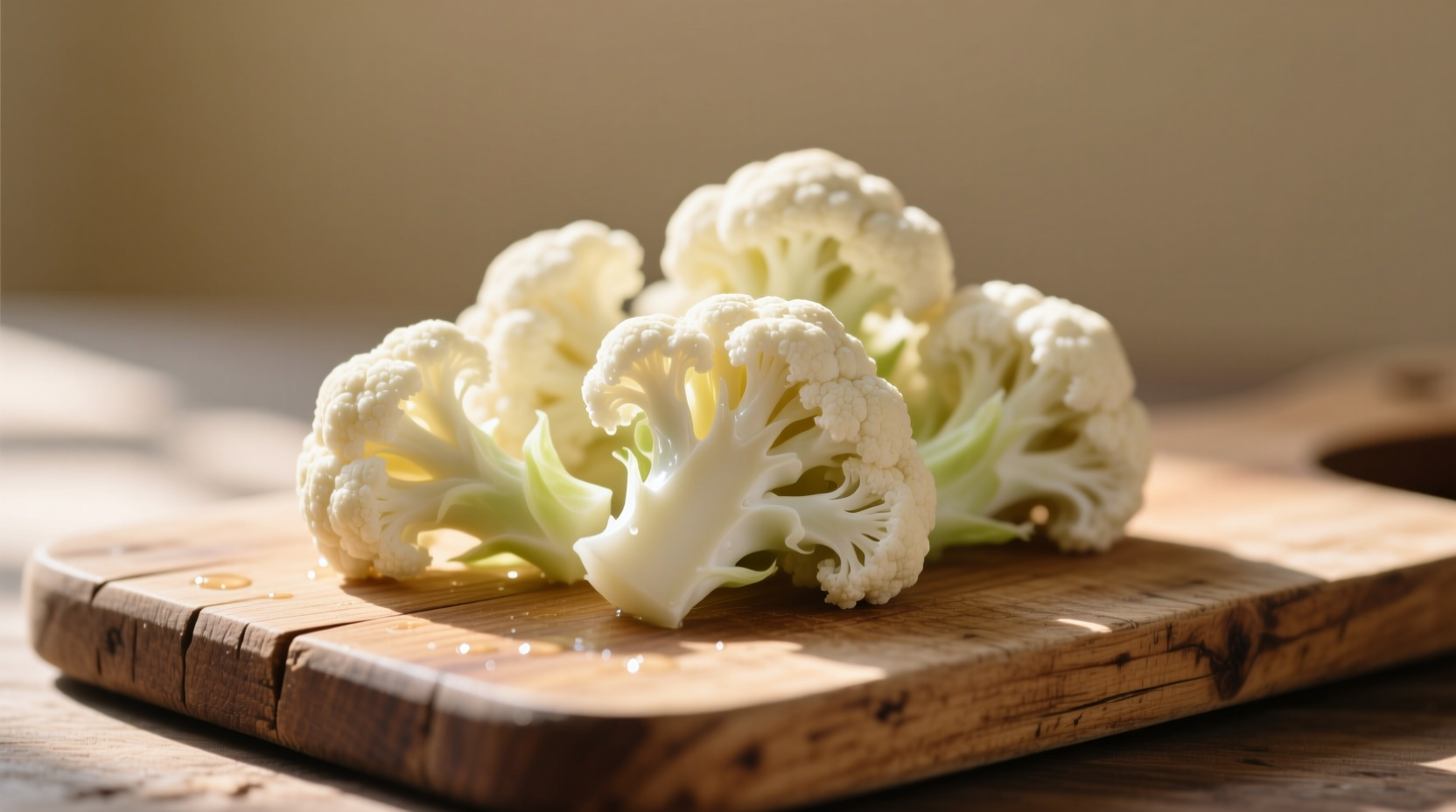Why This Cruciferous Powerhouse Deserves a Place on Your Plate
When you're looking for a versatile vegetable that delivers maximum nutritional impact with minimal calories, cauliflower stands out as a nutritional powerhouse. Unlike many trendy superfoods, cauliflower's benefits are backed by decades of scientific research on cruciferous vegetables. Let's explore exactly how this humble vegetable supports your health through evidence-based mechanisms.
Your Body's First Line of Defense: Cancer-Fighting Compounds
Cauliflower contains glucosinolates, sulfur-containing compounds that transform into active cancer-fighting agents like sulforaphane and indole-3-carbinol during digestion. According to research published in Nutrition and Cancer, these compounds help regulate enzyme activity that protects against DNA damage. The American Cancer Society notes that population studies consistently show higher consumption of cruciferous vegetables correlates with lower cancer risk, particularly for lung, colorectal, and prostate cancers.
What makes cauliflower particularly effective is its complete profile of these protective compounds. While broccoli often gets more attention, cauliflower contains comparable levels of these valuable phytochemicals without the stronger flavor that some find off-putting.
| Compound | Amount in 1 Cup Cauliflower | Primary Health Benefit |
|---|---|---|
| Sulforaphane | 45 mg | Activates detoxification enzymes |
| Indole-3-carbinol | 20.7 mg | Supports healthy estrogen metabolism |
| Beta-carotene | 18 mcg | Antioxidant protection |
| Vitamin C | 51.6 mg (77% DV) | Immune function and collagen synthesis |
Heart Health Support You Can Measure
Cauliflower's potassium content (234mg per cup) works with its fiber (2.5g) to help maintain healthy blood pressure levels. A comprehensive review in the American Journal of Clinical Nutrition found that increased cruciferous vegetable consumption correlated with a 15.6% lower risk of cardiovascular disease. The fiber in cauliflower binds to cholesterol in the digestive system, facilitating its elimination rather than absorption into the bloodstream.
Unlike some vegetables that lose nutritional value when cooked, cauliflower retains most of its heart-healthy compounds even after steaming. For maximum benefit, pair it with healthy fats like olive oil to enhance absorption of fat-soluble nutrients.
From Ancient Crop to Modern Superfood: A Research Timeline
Cauliflower's journey from regional Mediterranean crop to globally recognized health food reflects evolving scientific understanding of its properties:
- 1950s: Researchers first identify glucosinolates in cruciferous vegetables
- 1980s: Studies link cruciferous vegetable consumption with reduced cancer rates in population studies
- 1994: Scientists isolate sulforaphane and demonstrate its cancer-protective effects in laboratory settings (Johns Hopkins University)
- 2005: USDA begins including cruciferous vegetables in dietary recommendations for cancer prevention
- 2015: Research confirms cauliflower's compounds cross the blood-brain barrier, suggesting neuroprotective benefits
- 2022: Large-scale meta-analysis in Nature Food establishes dose-response relationship between cruciferous vegetable intake and reduced inflammation markers
Practical Ways to Maximize Cauliflower's Benefits
Understanding cauliflower's potential is only half the equation—you need practical strategies to incorporate it effectively into your diet:
Optimal Preparation Methods
How you prepare cauliflower significantly impacts its nutritional availability. Research from the National Institutes of Health shows that:
- Raw: Preserves maximum enzyme activity for compound conversion
- Light steaming (3-4 minutes): Increases antioxidant availability by 25%
- Roasting: Creates new beneficial compounds through the Maillard reaction
- Avoid boiling: Leaches water-soluble nutrients into cooking water
Daily Incorporation Strategies
Make cauliflower a regular part of your eating pattern with these practical approaches:
- Replace half your mashed potatoes with riced cauliflower for added fiber
- Add raw cauliflower florets to salads for crunch and nutrient density
- Use cauliflower rice as a base for stir-fries to increase vegetable intake
- Blend steamed cauliflower into soups for creaminess without dairy

When Cauliflower Might Not Be Your Best Choice
While cauliflower offers numerous benefits, certain situations require consideration:
- Thyroid concerns: Those with existing thyroid conditions should consume cruciferous vegetables in moderation and preferably cooked, as raw compounds may interfere with iodine uptake
- Digestive sensitivity: The raffinose carbohydrates in cauliflower can cause gas in some individuals—start with small portions
- Medication interactions: High vitamin K content may affect blood thinners like warfarin—maintain consistent intake if taking these medications
For most people, these considerations simply mean paying attention to portion sizes and preparation methods rather than avoiding cauliflower altogether. The Harvard T.H. Chan School of Public Health recommends including a variety of cruciferous vegetables in your weekly meal planning for optimal health benefits.
Putting It All Together: Your Cauliflower Action Plan
Based on current research, aim for 1.5-2 cups of cruciferous vegetables like cauliflower per week. This doesn't require dramatic dietary changes—simply substituting cauliflower for less nutrient-dense options in existing meals creates meaningful health improvements over time. The key is consistency rather than perfection; regular moderate consumption delivers more benefits than occasional large portions.
Remember that cauliflower works best as part of a diverse plant-based diet. Its compounds interact synergistically with other vegetables, creating a protective effect greater than any single food could provide alone. This explains why population studies consistently show the strongest health benefits among those consuming a wide variety of vegetables rather than focusing on any single "superfood."











 浙公网安备
33010002000092号
浙公网安备
33010002000092号 浙B2-20120091-4
浙B2-20120091-4